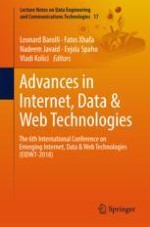This book presents original contributions on the theories and practices of emerging Internet, data and Web technologies and their applicability in businesses, engineering and academia, focusing on advances in the life-cycle exploitation of data generated from the digital ecosystem data technologies that create value, e.g. for businesses, toward a collective intelligence approach.
The Internet has become the most proliferative platform for emerging large-scale computing paradigms. Among these, data and web technologies are two of the most prominent paradigms and are found in a variety of forms, such as data centers, cloud computing, mobile cloud, and mobile Web services. These technologies together create a digital ecosystem whose cornerstone is the data cycle, from capturing to processing, analyzing and visualizing. The investigation of various research and development issues in this digital ecosystem are made more pressing by the ever-increasing requirements of real-world applications that are based on storing and processing large amounts of data.
The book is a valuable resource for researchers, software developers, practitioners and students interested in the field of data and web technologies.
